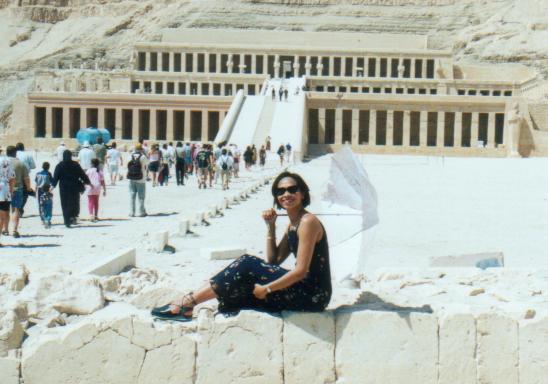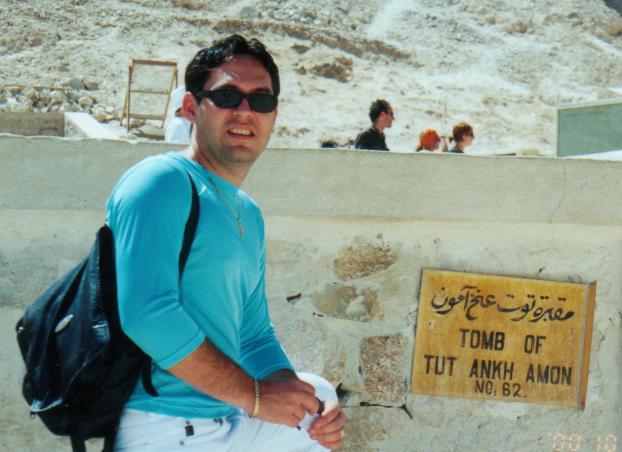EGYPT IV
In our trip to Egypt, we also visited the city of Luxor, located on what's called "The Nile Valley", about 500 km south of Cairo (only one hour flight). Luxor is considered as Egypt's greatest tourist attractions and one of the world's greatest open-air museums. It's really amazing!!! Its excellent state of preservation makes the city worth visiting and an unforgettable experience as well! There are sooooo many things to see in Luxor that it becomes impossible to describe here all the beauties our eyes saw thereE
Partly rock-out, partly freestanding, "Deir al-Bahri" (the Temple of Hatshepsut) built by Queen Hatshepsut and dedicated to her father, Tuthmosis I, is considered a work of architectural genius. The Temple is 37m wide and it was discovered in the 19th century, but only completely excavated in 1876.
Hatshepsut was the first woman ever to reign as King, in Egypt, and also the first female Pharaoh. For a better "assimilation" of this Queen's name, our guide suggested us to call her "Hot Chicken Soup" (saying it really fast it sounds just like her real name - hehe). Can you imagine if she "finds out" we called her that way all the time while visiting her Temple? Hehe.

Deir al-Bari or Temple of Hatshepsut - Luxor/Egypt, October/2000
In Luxor, we also visited the "Valley of the Kings" where most of the royal burial sites are located. All the tombs (except the Tomb of the Sons of Ramses II Eit was, unfortunately, closed for restoration when we were there) followed a similar design, deviating only because of structural difficulties or the length of time spent on their construction. There are over 60 Tombs in the Valley so... since they were all "quite similar", we visited only a few of them.
The most famous Tomb of the "Valley of the Kings" is the Tomb of Tutankhamun. It was discovered in 1922 and nowadays, there is nothing inside of it... all the furniture, statues, chariots, musical instruments, weapons, boxes, jars and the famous Tutankhamun's gold coffin are displayed in the Egyptian Museum in Cairo.

Tomb of Tutankhamun - Luxor/Egypt, October/2000
The Tomb of Ramses IV is one of the finest Tombs worth visiting. Its state of preservation called our attention. The graffiti writing inside the Tomb dating back to 278 before Christ is still clearly visible. Really amazingly beautiful!

Tomb of Ramses IV - Luxor/Egypt, October/2000